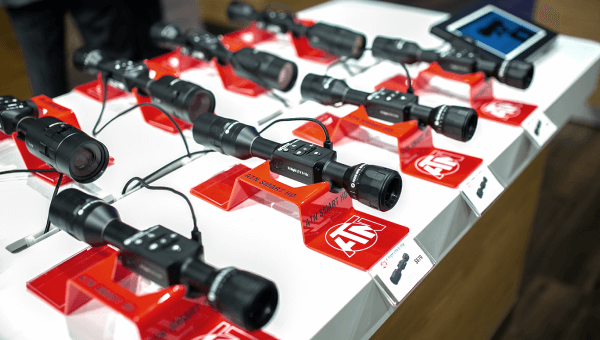How to coyote hunt?
Our fascination with coyotes is easy to understand. They are clever predators, yet can be elusive prey. Though considered varmints by some, a prime winter coyote pelt is a true trophy. While coyote hunting stirs controversy in some areas, their numbers need management like deer and elk.
For many hunters, coyotes are targets of opportunity. True coyote hunters take the pursuit seriously with specialized tactics and gear. Whatever your skill, hunting coyotes provides year-round chances to hone skills and take part in predator management.
Done right, coyote hunting delivers thrilling, knee-shaking experiences that keep you coming back. But learning to hunt coyotes takes specific skills to regularly bring these wary canines within shooting range. Tactics vary by location and season, but the principles are the same. Here is a comprehensive guide to coyote hunting tips and tactics I've used successfully. It includes tips for where you hunt in coyote country.
Finding Coyote Habitat
Coyotes adapt and expand across diverse habitats - from Rocky Mountain high country to Mexico's deserts and Florida's humid everglades. But certain areas hold more coyotes.
Every day coyotes search for their next meal. Find their food and you'll likely find coyotes. Mice and rabbits are a mainstay, with the occasional deer when possible. Focus on concentrations of prey, especially with snow to identify tracks. In spring, check deer birthing areas where does drop fawns.
Calling Coyotes
Calling coyotes into range is a thrilling way to hunt. Tricking them to hunt you is special. This can be done with various calls and tactics.
Locator Calls
Coyotes "sing" at night with howls and barks to locate each other. You can exploit this to pinpoint them. Although they howl in daylight, coyotes primarily vocalize at night or around dawn and dusk. When hunting, howl from hilltops or ridges as daylight breaks so sound travels. If no response after a few howls, move on. But if a coyote answers, note its location. Wait for daylight or plan to return and hunt the area later. Coyotes are active yet territorial, often staying in the same general vicinity day to day.
Distress Calling
Imitating animal distress screams signals an easy meal to coyotes in range. Some charge in aggressively, others approach cautiously.
Electronic calls provide life-like sounds at your fingertips. But overuse educates coyotes, making them avoid common sounds. Use a variety of calls, including after-market sounds to stand out from other hunters.
Another e-caller mistake - blasting full volume expecting to reach distant coyotes. Start calls softly, gradually increasing volume over several minutes. Imagine soft calls drawing coyotes in before louder sounds trigger their predatory instinct for the final approach.
Tailor calls to location and season. Rabbit distress works most places. Pup distress ignites aggressive reactions in spring when adults have dens of pups.
Coyote vocals like howls are very effective during winter breeding. A lonely female or dominant intruder incites territorial responses or draws potential mates. But beware - coyotes often watch sound sources before approaching.
Setting Up
Choosing your stand is vital. Follow these rules to remain hidden:
- Always set up downwind, even if it seems too obvious. You'll never outsmart their nose.
- Have your back to trees or brush to break up your outline. Sit in shade when possible. Their eyes will spot anything not blending into surroundings.
- Keep vehicles out of sight from any directions coyotes could approach. Vehicles can ruin hunts by being visible to coyotes far away.
- Know your surroundings. Range landmarks ahead of time since you usually won't have time once a coyote appears.
- Don't set up right behind the caller. Coyotes pinpoint sounds remarkably. Sit at least 30-40 yards away and off to the side of expected approach.
- When possible, choose elevated positions to easily scan with minimal movement.
Calling Sequence
Give each stand at least 15-20 minutes before moving. Start with coyote howls to perk any nearby ears. After 2-3 howls, wait silently for a few minutes.
Make a second different howl or yip, as if multiple coyotes are present. Sometimes repeat this sound again with 2-3 minute pauses between. If no sightings yet, start a distress call on low volume, gradually increasing intensity every few minutes.
The opening howls act as bait to draw curiosity. The distress triggers prey-drive for the final approach.
Guns and Loads
Coyotes are thin-skinned making most rifles and cartridges effective. Focus on guns you're comfortable with and confident in for accuracy. Popular predator calibers include .223 Rem., 204 Ruger, 22-250 Rem., 243 Win. and 6.5 Creedmoor. For fur hunting, choose smaller calibers and bullets that won't damage hides. For meat hunts, rapidly expanding bullets like Hornady V-Max kill cleanly
Optics
You need to take into account that coyotes don’t come close and are very clever predators, it means you need to be able to spot them at a long distance. Best way to do it is to use thermal monocular or thermal binocular. Once you spot it you need propper scope to hit it. All needed stuff you can find at ATN.
Other Gear
A few other items improve success:
- Stable shooting rests like bipods and tripods
- Quality binoculars and rangefinder
- Butt pad to stay dry and warm
- Camo clothing to blend into surroundings
- Warm base layers to avoid shivering
Preserving Fur
Skinning coyotes takes time but is straightforward:
- Cut up the rear legs meeting at the tail base.
- Either split the tail or cut the joint. Carefully peel the hide forward toward the head.
- Cut joints at ankles, wrists, and base of skull. Let pros remove remaining bones.
Skin immediately after killing while hide still peels off easily. Thin skin means take extra care not to put additional holes in the fur.
Habitat-Based Tips
Coyotes thrive in habitat near you. Applying basic tactics along with tips tailored to your location can provide heart-pounding thrills.
Timber
Coyotes increasingly occupy expansive woods despite the challenges of endless cover and limited calling range. Solutions include:
- Set up in openings like clear-cuts or meadows within woodlands. You gain visibility, calling distance, and access where prey concentrate in transition zones.
- Use hilly terrain to call across valleys, surveying opposite slopes for responding coyotes.
- In expansive woods, set up frequently, call loudly, and move often. Covering ground is key to reaching roaming coyotes.
Scouting also helps:
- Triangulate locations from nighttime howls to identify denning areas. Approach those spots at first light.
- After fresh snow, track crossing coyotes to identify active areas. Don't attempt long trailing; just note their presence.
Farmlands
Coyotes flourish in agricultural areas but are extremely wary where heavily pressured. Small cover patches harbor high densities. Match tactics to diverse habitats like dairy farms, row crops, range lands, and orchards. Be adaptable as the coyotes.
Sneak in unseen to set up, even if it means postponing hunts when wind is bad. Call prey distress sounds across fields into cover like woodlots, wetlands, fence lines, and ditches where rabbits, birds, and rodents hide. Draw coyotes out into open areas.
Volume grabs attention but finessing brings commitment. Rifles smaller than big-game guns are handy and more palatable to landowners.
Open Country
Legendary coyote hunting begins west of the Great Plains where deer and antelope roam.
Serious hunters should experience the sheer opportunity of western coyotes at least once. But don't get overconfident. These cunning varmints challenge your skills.
While visibility helps spot approaching coyotes, that openness means they can see you clearly if silhouetted on ridge tops. Cross heights at dips or ravines only. Never glass from summits. Slide low into setup spots presuming coyotes lurk nearby. They might be within 100 yards.
Productive spots include:
- Rocky outcrops and bluffs
- Daytime hideouts like cedar brakes
- Brushy river bottoms
- Low sagebrush pastures
- Broken, inhospitable terrain
Suburbs and Exurbs
Coyotes inhabiting suburban greenbelts confirm their adaptability, inhabiting areas down to city outskirts. Helping control them builds community relations.
Access is key on private lands. Make a public relations effort dressed neatly to explain interest in coyote hunting. Provide contact cards and emphasize safety. Avoid high-powered rifles; offer shotguns or light rimfires instead. Suggest air rifles if firearms cause concerns.
Hunt only on weekday dawns and dusks to avoid heavy recreational traffic. Stay low-key.
Suburban coyotes respond quickly to distress calls, expecting free meals in developed areas. If one comes in, stay ready as others may be nearby. Squeakers coax coyotes through fences or across lawns.
In conclusion
Coyote hunting opportunities exist across America. While mastering it takes years, applying basic tactics and tailored tips will help any hunter bag more coyotes. With persistence and adaptability to match the clever coyote, thrilling hunts await in any terrain you choose to explore.






